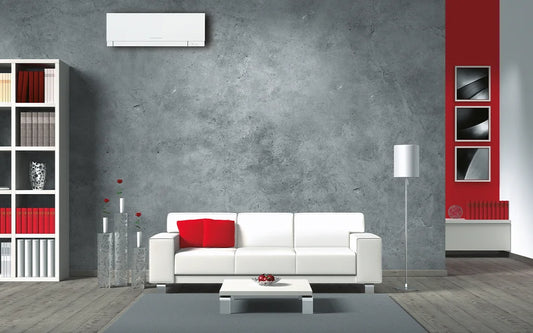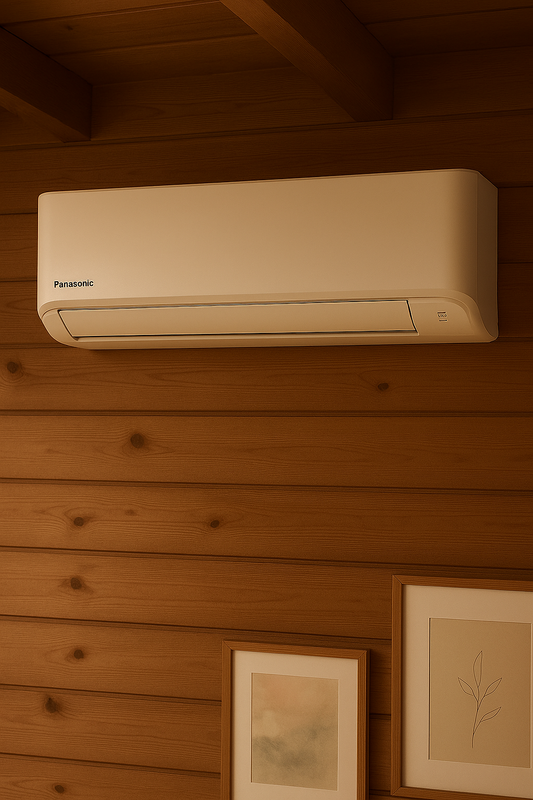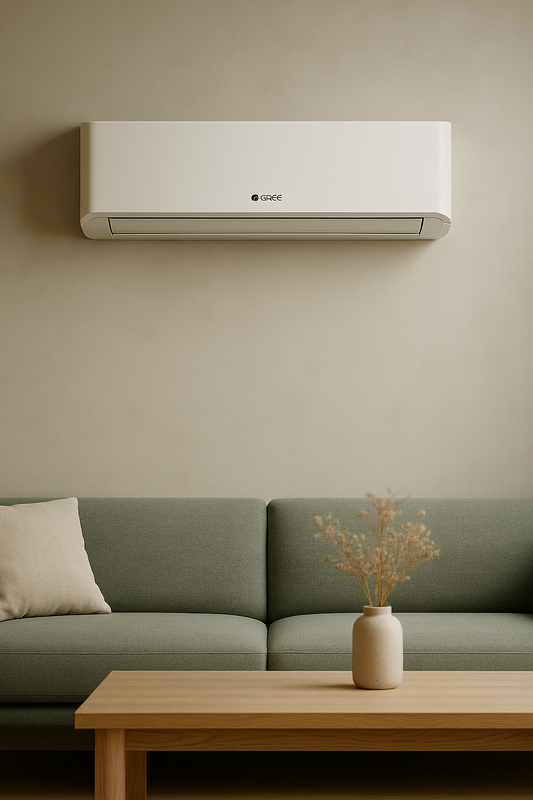Värmepump Luft-Luft Installation: En Guide
Inledning
Att installera en värmepump luft-luft är ett effektivt sätt att både kyla och värma ditt hem samtidigt som det bidrar till att minska energiförbrukningen. I denna artikel kommer vi att gå igenom installationen av en värmepump luft-luft, dess fördelar och användningsområden, samt vanliga frågor som kan uppstå.
Definition och Bakgrund
En värmepump luft-luft är en typ av värmepump som använder utomhusluften som energikälla för att värma eller kyla inomhusluften. Genom att utnyttja den naturliga värmeenergin i luften kan värmepumpen effektivt reglera temperaturen i ditt hem året runt.
Fördelar och Användningsområden
En av de främsta fördelarna med en värmepump luft-luft är dess energieffektivitet. Genom att använda den befintliga luften som energikälla minskar den behovet av traditionella uppvärmnings- och kylsystem, vilket i sin tur leder till lägre energikostnader. Dessutom kan en värmepump luft-luft både värma och kyla, vilket ger en flexibilitet som traditionella system saknar.
En värmepump luft-luft är lämplig för både villor och lägenheter och kan installeras i de flesta typer av bostäder. Den är också miljövänlig eftersom den använder förnybar energi från utomhusluften.
Relaterade Tekniker, Begrepp eller Variationer
Det finns flera olika typer av värmepumpar, såsom luft-vatten och bergvärmepumpar, som också kan användas för att värma och kyla hemmet. Varje typ har sina egna fördelar och begränsningar, och valet av värmepump bör baseras på den specifika fastighetens behov och förutsättningar.
Vanliga Frågor (FAQ)
-
Hur lång tid tar det att installera en värmepump luft-luft?
Installationstiden kan variera beroende på fastighetens storlek och befintliga system, men vanligtvis tar det några dagar att genomföra en fullständig installation. -
Vad är underhållskraven för en värmepump luft-luft?
En värmepump luft-luft kräver regelbunden rengöring och service för att bibehålla sin effektivitet. Det är viktigt att följa tillverkarens rekommendationer för underhåll. -
Kan jag installera en värmepump luft-luft själv?
Installation av en värmepump luft-luft kräver vanligtvis professionell expertis för att säkerställa korrekt funktion och säkerhet. Det rekommenderas att anlita en certifierad installatör för att utföra arbetet.
Sammanfattning
Att installera en värmepump luft-luft är ett kostnadseffektivt och miljövänligt sätt att reglera temperaturen i ditt hem. Genom att utnyttja den naturliga värmeenergin i utomhusluften kan en värmepump luft-luft erbjuda både värme och kyla på ett effektivt sätt. Genom att förstå dess fördelar, användningsområden och underhållskrav kan du fatta välgrundade beslut när det gäller installation och drift av en värmepump luft-luft.
Installation Process
The installation process for a ductless mini-split heat pump typically involves mounting the indoor and outdoor units, connecting the refrigerant lines, and installing the necessary electrical connections. It's important to follow the manufacturer's installation guidelines to ensure proper functionality and efficiency.
Energy Efficiency Considerations
One of the key considerations when installing a ductless mini-split heat pump is its energy efficiency. By utilizing advanced inverter technology, these systems can adjust their compressor speed to meet the specific heating or cooling demands, resulting in significant energy savings compared to traditional HVAC systems.
Environmental Impact
Due to their energy-efficient operation and utilization of renewable outdoor air as a heat source, ductless mini-split heat pumps have a lower environmental impact compared to conventional heating and cooling systems. This makes them a sustainable choice for environmentally conscious homeowners.
Placement and Sizing
Proper placement and sizing of the indoor and outdoor units are crucial for the optimal performance of a ductless mini-split heat pump. Factors such as room size, insulation, and local climate should be taken into account to ensure that the system can effectively heat or cool the intended space.
Cost Considerations
While the initial investment in a ductless mini-split heat pump may be higher than traditional HVAC systems, the long-term energy savings and potential utility incentives can offset the upfront costs. Additionally, the flexibility of zone-specific heating and cooling can lead to further cost savings over time.
Additional Maintenance Tips
In addition to regular cleaning and servicing, it's important to keep the outdoor unit of a ductless mini-split heat pump free from debris and vegetation to ensure optimal airflow and efficiency. Clearing any obstructions around the unit can help maintain its performance.
Remote Control and Smart Features
Many ductless mini-split heat pumps come with remote control capabilities and smart features, allowing homeowners to easily adjust temperature settings and operating modes. Some models even offer smartphone integration for convenient control.
Warranty Coverage
Understanding the warranty coverage for the ductless mini-split heat pump is essential. Familiarize yourself with the warranty terms, including coverage duration, components included, and any maintenance requirements to maintain warranty validity.
Noise Levels and Sound Dampening
While ductless mini-split heat pumps are known for their quiet operation, it's important to consider the noise levels, especially for indoor units located in living spaces. Some models offer sound dampening features to further reduce operational noise.
Professional Installation Benefits
Opting for professional installation of a ductless mini-split heat pump ensures that the system is properly sized, installed, and commissioned for optimal performance. Professional installers can also provide valuable insights on system placement and maintenance best practices.
Common Installation Challenges
During the installation of a ductless mini-split heat pump, certain challenges may arise, such as identifying the optimal locations for indoor and outdoor units, navigating through wall structures for refrigerant line installation, and ensuring proper electrical connections. Overcoming these challenges is crucial for a successful installation.
Regulatory Compliance and Permits
Prior to installing a ductless mini-split heat pump, it's important to review local building codes and regulations to determine if any permits are required. Compliance with these regulations ensures the safety and legality of the installation process.
Integration with Existing HVAC Systems
For homes with existing HVAC systems, integrating a ductless mini-split heat pump may require careful consideration of compatibility, ductwork modifications, and system interactions. Professional assessment and consultation can help streamline the integration process.
Zone Control and Customization
One of the notable advantages of ductless mini-split heat pumps is their ability to provide zoned heating and cooling. Understanding how to effectively utilize and customize zone control settings can maximize energy efficiency and comfort within different areas of the home.
Comparison with Traditional HVAC Systems
Comparing the performance, energy efficiency, and long-term cost benefits of ductless mini-split heat pumps with traditional HVAC systems can aid homeowners in making informed decisions about their heating and cooling solutions. Understanding the differences can highlight the advantages of ductless systems.
Remote Monitoring and Maintenance
Some ductless mini-split heat pumps offer remote monitoring and diagnostic capabilities, allowing homeowners and HVAC professionals to track system performance, identify potential issues, and perform proactive maintenance. Leveraging these features can enhance system reliability and longevity.
Climate Considerations
The effectiveness of a ductless mini-split heat pump can be influenced by climate variations, such as extreme cold or heat. Understanding the system's performance in different climates and implementing appropriate adjustments can optimize its overall functionality.
Seasonal Efficiency and Performance Tuning
Optimizing the seasonal efficiency of a ductless mini-split heat pump involves adjusting settings, fan speeds, and operational modes based on seasonal temperature fluctuations. Fine-tuning the system can ensure consistent performance throughout the year.
Energy Rebates and Incentive Programs
Exploring available energy rebates, tax incentives, and utility programs for ductless mini-split heat pumps can provide cost-saving opportunities for homeowners. Familiarizing oneself with potential incentives can contribute to the overall financial benefits of the system.
Long-Term Durability and Reliability
Evaluating the long-term durability and reliability of a ductless mini-split heat pump, including the lifespan of components, warranty coverage, and anticipated maintenance needs, can guide homeowners in assessing the system's value and longevity.





